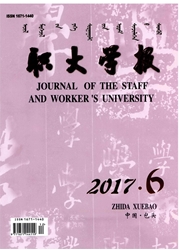

 中文摘要:
中文摘要:
《九辩》“兮”字内置句式共计32例,分置于三个段落。开头一段10句,以非均衡对应结构为主,带有明显的散文化倾向。第二段18句,以整齐对称型结构为主,辅之以大体均衡对应型句式。第三段仅4句,位于“骚体”句式中间。“兮”字内置句式在结构形态上前后两段存在明显的差异。体现的是作品脉络的转折。两种不同形态的“兮”字内置句式,具有不同的情感承载.反映出创作主体的心态与所用句式之间的对应关系。《九辩》开头一段具有散文化倾向,但作品绝大部分篇幅是沿用《离骚》的语句,不能把散文化的结论加之于整篇。第三段“兮”字内置句打破了“骚体”句式的抒情节奏。突显出音乐美。
 英文摘要:
英文摘要:
In Nine Dialectical there are 32 built-in sentences with the word "Xi", and they are respectively arranged in three paragraphs. In the opening paragraph of ten sentences, the structure is non-equilibrium corresponding with a clear tendency of prose. The second section of 18 sentences with neat symmetry type structure complemented by general equilibrium model. The third section is only 4 sentences among the sentence structure of Sao. There are obvious differences between the two segments of the built-in sentences of "Xi" in the structural form, which is the turning point of the works. The two different forms of built-in sentence of "Xi" with different emotional load reflect the relationship between the writer's state of mind and the sentence. The opening paragraph of Nine dialectical has the tendency of prose, but most of the space follows the statement of "Lisao" The built-in sentences of "Xi" in the third paragraph break the lyrical rhythm of Sao and highlight the beauty of music.
 同期刊论文项目
同期刊论文项目
 同项目期刊论文
同项目期刊论文
 期刊信息
期刊信息
